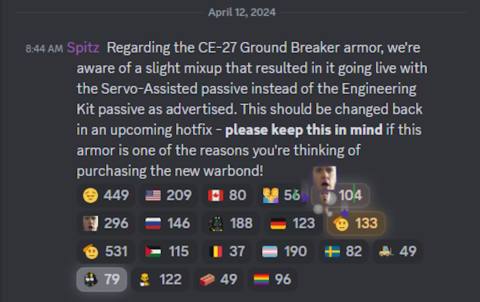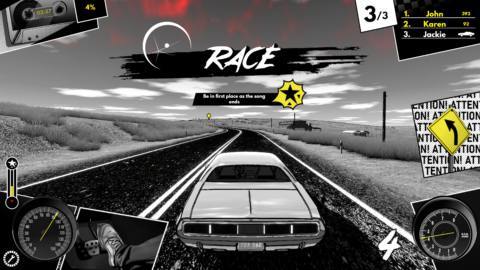My last few weeks with Abiotic Factor have been a cure for survival crafting burnout. I thought I'd never want to look at another crafting bench again, but it turns out, all I really needed was a genuinely fresh perspective on survival crafting to get on board. What first drew me in was Abiotic's setting, a post-disaster underground lab inspired by Half-Life's Black Mesa facility.
You won't find choppable trees in the cold, echoing halls of the Gate Cascade Research Facility. You can't forage for berries or build a log cabin, but you can spend your last dollar on a vending machine root beer and smash up a CRT monitor for its useful innards. You don't play as a blank slate or seasoned survivalist—you're a schlubby scientist with no idea what they're up against, a fact you're reminded of every time you vomit up dubious soup, get so sleepy your eyelids narrow, or have to find a bathroom before you have a serious accident in your pants.
For Deep Field games founder Geoff “Zag” Keene, these deep but “simple systems” were crucial to making a survival game that he'd actually like to play, because he's not usually the biggest fan of the genre.
“So I've always had this interest in survival games, but I'm not a big fan of survival games,” Keene told PC Gamer in an interview last week. “I play them with friends, but I always find them to be quite grindy and kind of boring.”
One of Deep Field's goals early on was to deconstruct the typical loop of so many survival games (chopping down trees, building bases, maintaining them) and only keep the parts they liked.
“I liked the exploration of [survival crafting], I liked the adventure, and I like the roleplay of it too. I like sitting around campfires and chilling with your buds, you know, and I think a lot of games don't promote that a lot,” he said. “So that's why sitting is one of our major features in Abiotic Factor. It's actually how you rest and heal in a lof of ways. We wanted to promote that environment.”
You have to eat, drink, and rest, but not all that often. When you do take a nap or drop a deuce, a timing minigame appears to make time pass quicker. You only need to craft tools once and then easily repair them. Keene said his team was inspired by another unorthodox survival game, Project Zomboid, and its “Moodle” system.
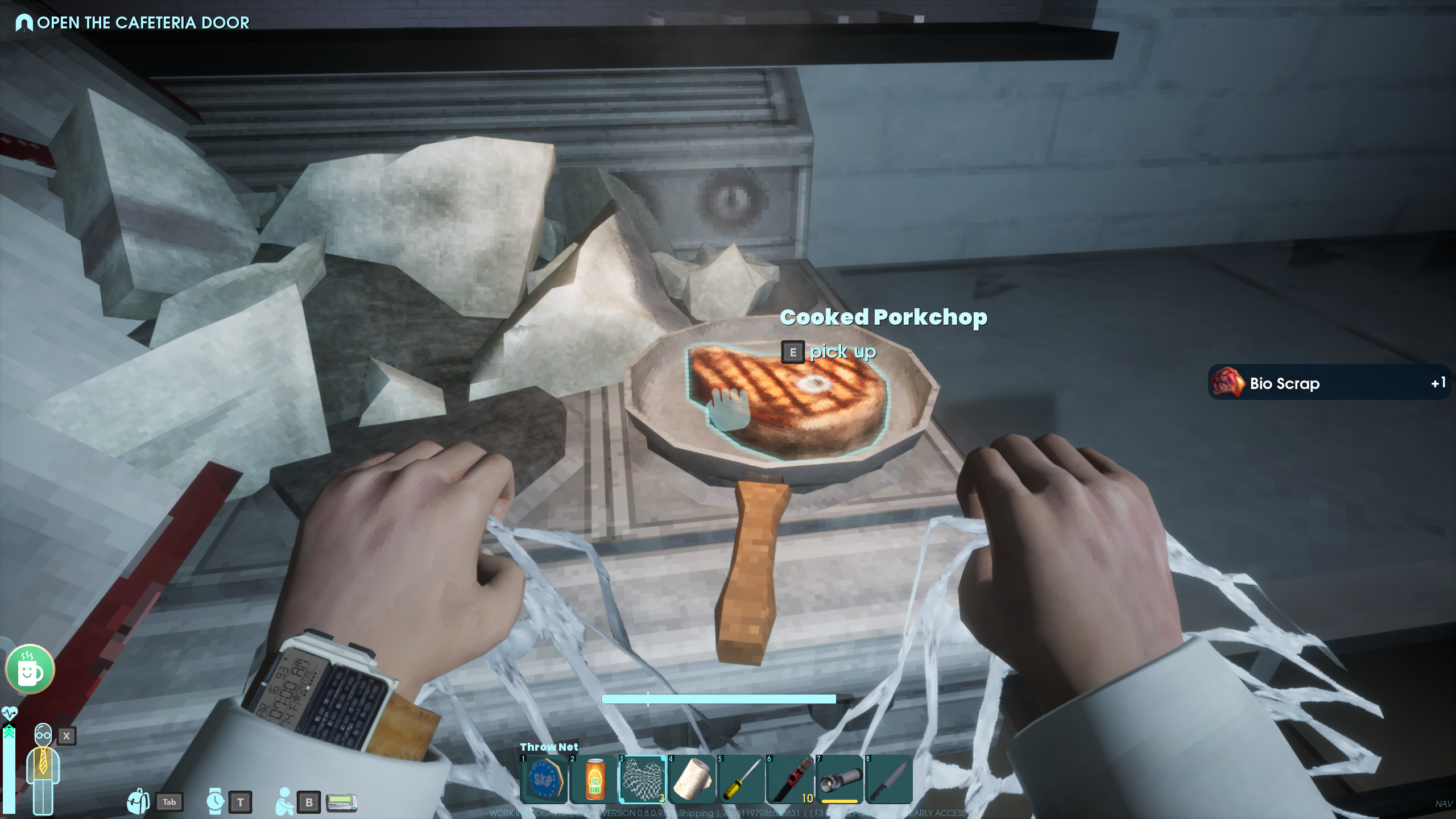
“We didn't want to have a lot of meters, we wanted to have feelings,” Keene said. “When your character gets sick, you need to figure out why or think back to what you just did to make yourself sick, like eating a raw piece of meat or getting puked on,” Keen said. “I really feel quite strongly that the game is better when it tells you less. That's why we don't have meters everywhere.”
It does have some meters, though. HUD pop-ups and voice lines will tell you when you're getting hungry or it's time for the toilet, but you can call up a status screen to see meters for your core bodily functions. “It actually took several people on the development team pushing me to get meters even visible in your health screen. I fought both of those, and I lost because ultimately it was the better idea.”
Systems shock
Roleplay happens as a matter of course in Abiotic Factor. Beyond the basics you're rewarded with non-obvious buffs for not just surviving, but taking good care of yourself. When you're at your base and away from danger, you get a “Home Sweet Home” rest bonus. Sitting in a chair speeds up healing, as does relaxing by the warmth of a heater. Filling your belly with good soup will slow your hunger with a special “Souper Satisfied” effect, and even minor clothing items like a chef apron keep the wearer from getting dirty with blood and alien guts.
“It's our whole philosophy to make everything matter in the game, down to even the small stuff,” Keene said.
These simple simulations pair well with Abiotic Factor's exploration. You're initially dropped in the first floor of the Gate Cascade Research Facility. Near the starting point is a plaza that spokes off toward a handful of different departments. Inching my way through hallways with nothing but a pipe club and crossbow made from a table leg and highlighters often feels like I'm playing a long-lost Half-Life spinoff story, or the Prey 2017 sequel of my dreams.
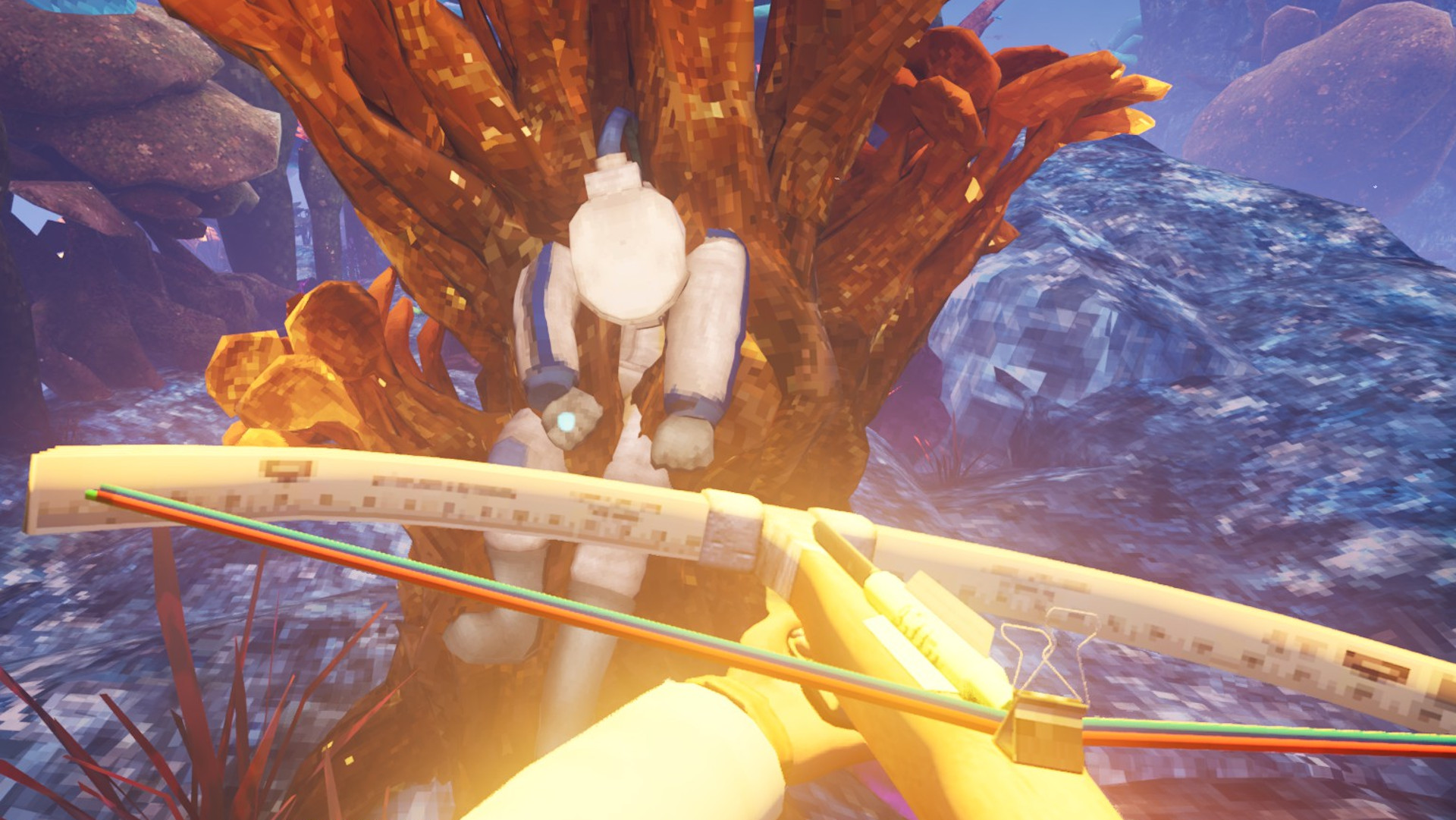
There's a lot of immersive sim DNA in Abiotic—reading emails, looting desks for valuables, exploiting in-world rules that everything follows—but Keene said he never set out to make an immersive sim.
It’s weird that I guess I accidentally made an immersive sim.
Geoff “Zag” Keene
“Until a few years ago, I'd never even heard [the term immersive sim],” he said. “I understand what it means on paper, I understand what games are considered immersive sims, but I never made Abiotic Factor thinking 'This is an immersive sim, definitely.'”
But fans keep telling Keene Abiotic Factor reminds them of their immersive sim favorites. He appreciates the kind comparisons and is starting to embrace the label, intentional or not.
“It's weird that I guess I accidentally made an immersive sim. I'm not sure it was an intentional design act to make it [that way], was more just this is the game I want to play. Abiotic Factor is very much built from the ground up as a game I think would just be fun.”
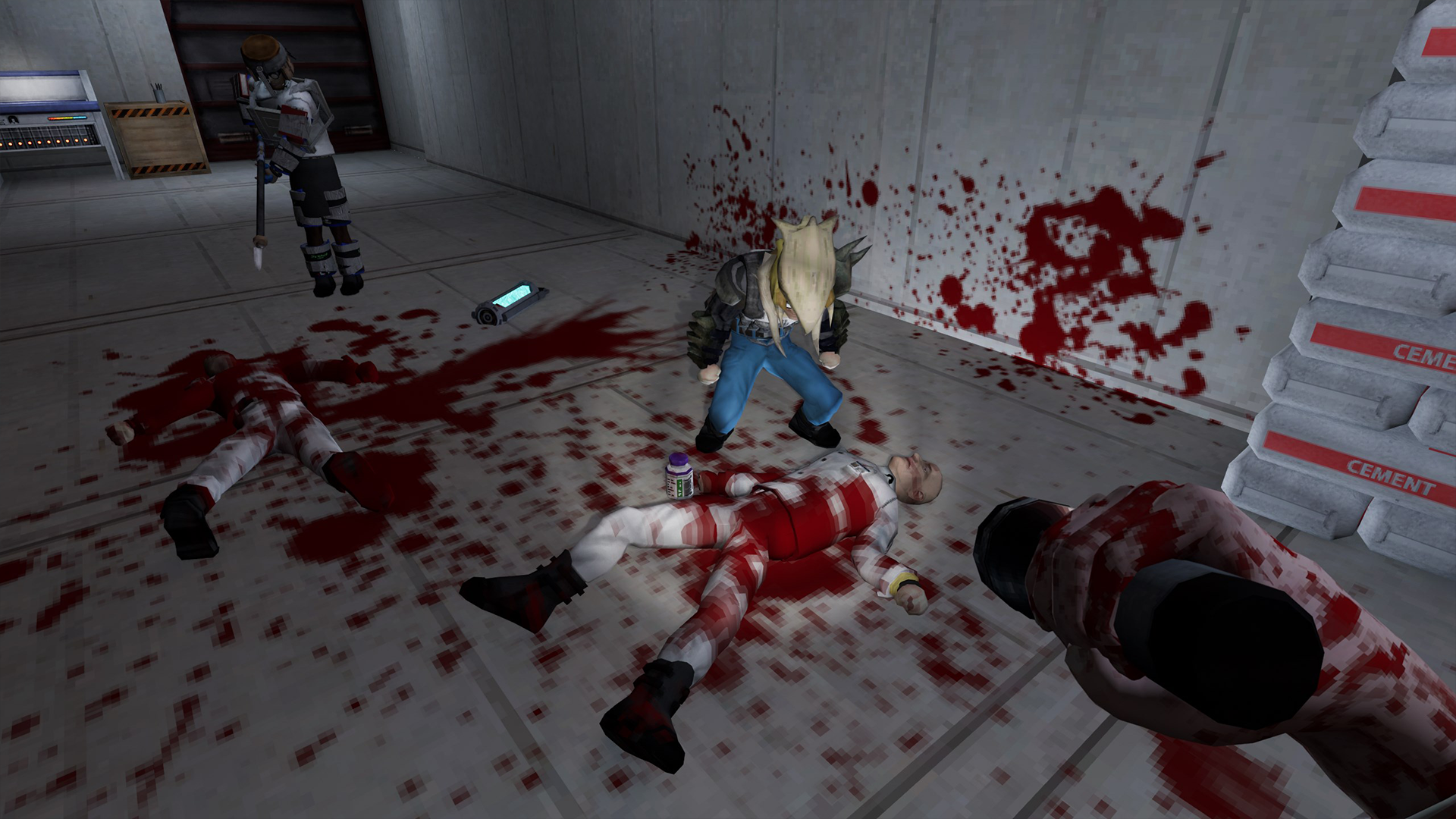
Keene also talked about how Abiotic Factor's unique setting has sometimes backfired when introducing it to players. How do you communicate to survival crafting fans expecting screenshots of forests, dirt, and log cabins that a game about balding scientists in a lab is right up their alley?
“I think some people who are familiar with survival crafting games think, 'I don't understand this game. This is too foreign to me.' So we've definitely had that issue,” he said. “It's definitely tricky. It's why we show a lot of crafting in the trailers. It's why we show people smashing stuff and picking up the resources, even though that's kind of boring.
“It's been quite a battle, but it's been a fun battle. It's a creative challenge, I think. And it seems like we've explained well enough to enough people, nearing 300,000 copies now, that they're getting it, so that's really exciting.”
Not bad for a survival game that doesn't look like a typical survival game.
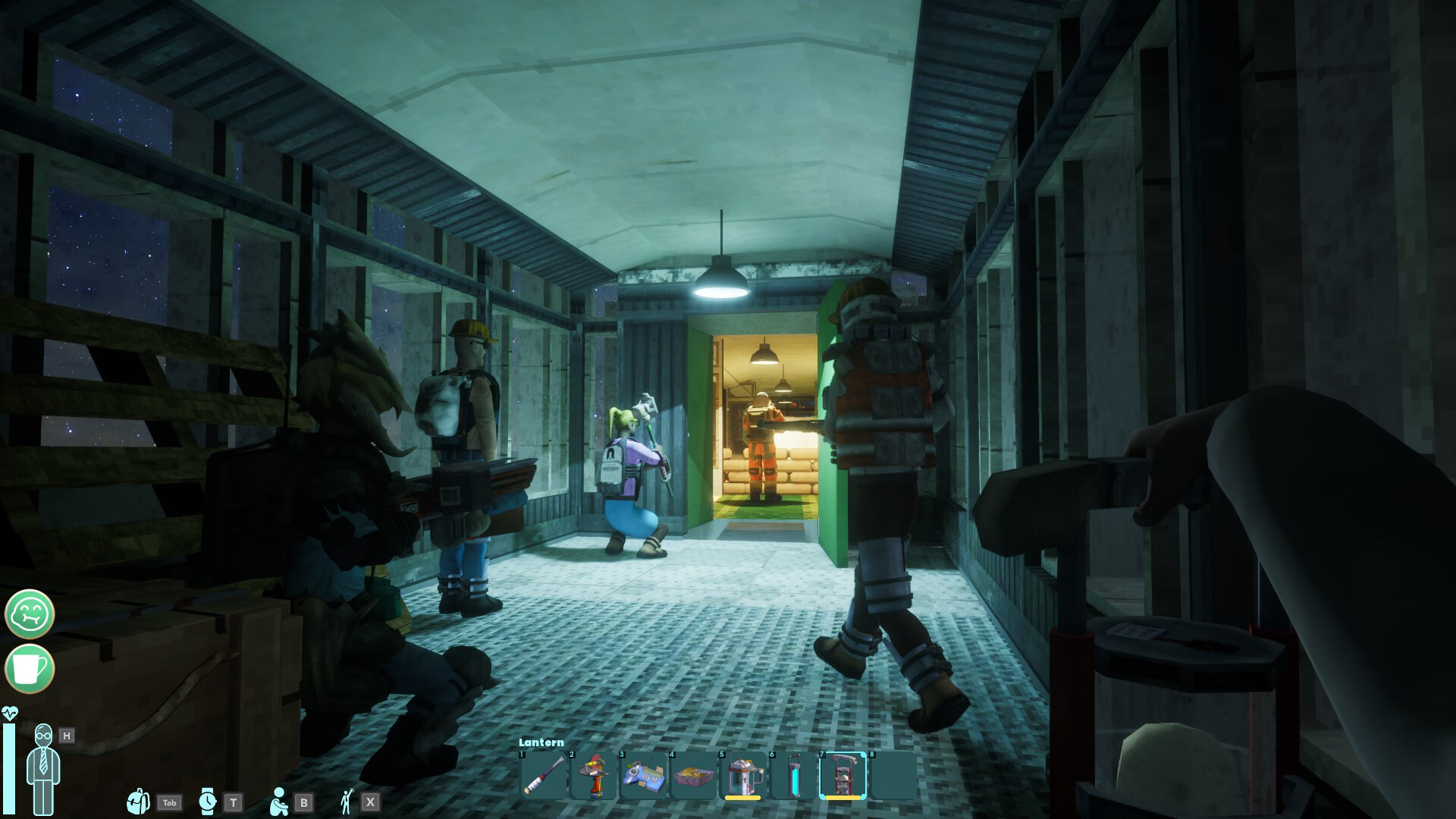
There's already a lot to the early access version of Abiotic Factor, and it's only getting bigger. In a month, Deep Field has added cheese-making and walkie talkies that make long-range coordination a breeze. Two more major wings of the facility are set to come before the planned 1.0 launch in late 2024, alongside loads of “goodies” and new secrets. Deep Field's public roadmap is full of stuff I'm eager to get hands on, like the hydro plant sector, jetpacks, laser systems, and more vehicles. But Keene says his team is also looking beyond launch.
“We have our 1.0 goals, but we also have 1.1 goals.”



